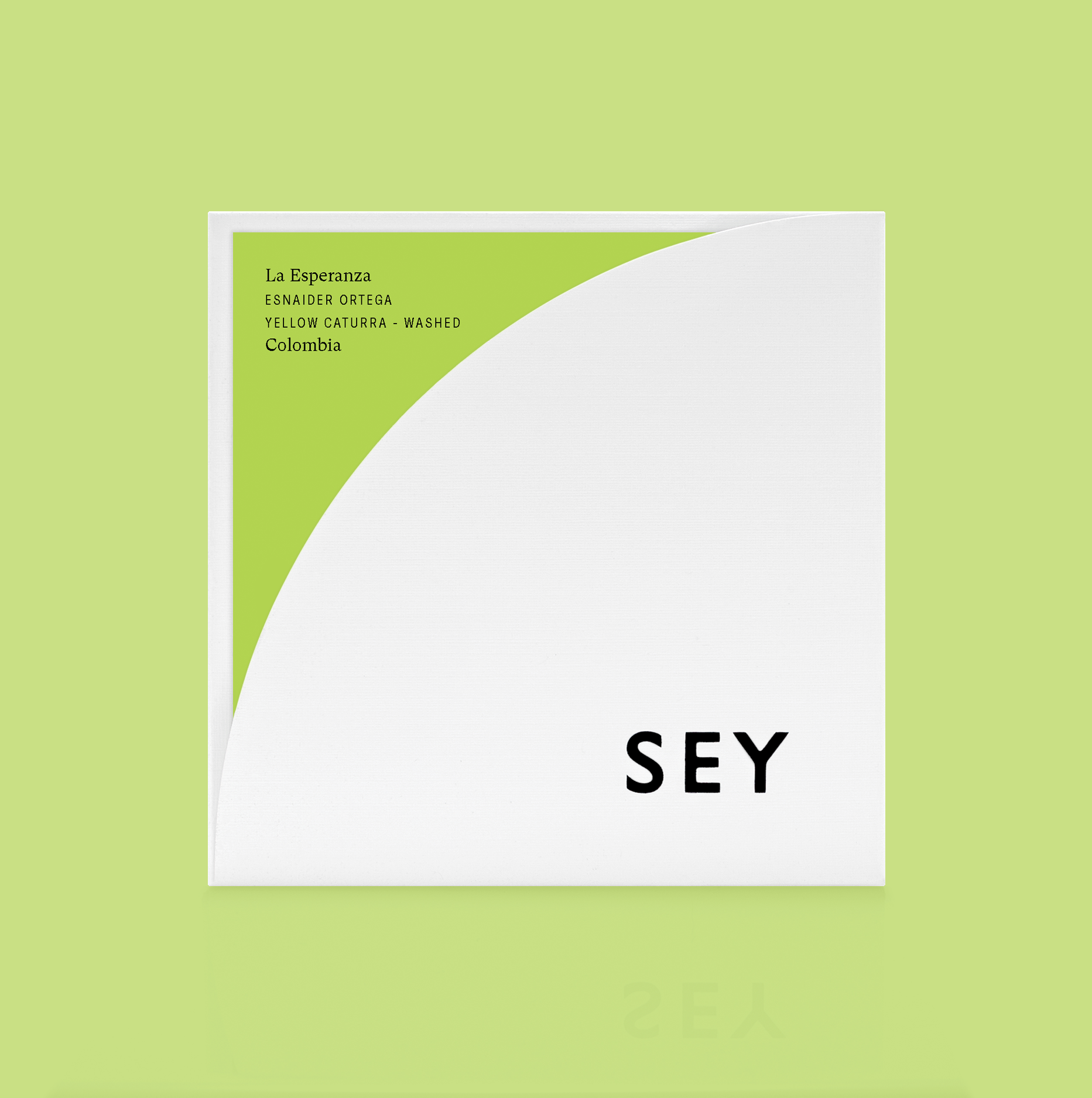
This 100% Yellow Caturra lot is grown, harvested, and processed with extreme care and meticulousness. The cup is sweetness-driven, with ripe cherry, soft and balanced acidity, and a cocoa finish.
Yellow Caturra
San Agustín, Huila
1,750 masl
Mitaca; January, 2020
Hand picked at peak ripeness. Floated to further remove defects and pulped on the day of harvest. Dry fermented in oak barrels for 30 hours. Wood is used because it is how Esnaider’s grandfather used to ferment, and its porous nature potentially supports more microbiological activity, and therefore more interesting fermentation. The coffee is then hung to dry in sacks, and left to ferment for another 8 hours without mucilage. Dried for 34-40 days.
ABOUT ESNAIDER ORTEGA
“I am a fourth-generation coffee producer. I am convinced that working with specialty coffee is the solution for the difficulty in Colombia since the quality of our coffee is reflected in a better quality of life. My family and I are a team, and we have been working with passion and dedication for more than 12 years to continue improving our quality.”
This is our second year working with Esnaider Ortega and his family. It is an honor to work with this family, and we are proud to have the opportunity to roast and present their coffees. Their dedication to innovation in the production of high quality coffee is truly inspiring. We're very excited to see the progression of their coffees in the coming years.
ABOUT CATURRA
Caturra is a natural mutation of the Bourbon variety. It was discovered on a plantation in the state of Minas Gerais in Brazil sometime between 1915 and 1918. Today, it is one of the most economically important coffees in Central America, to the extent that it is often used as a benchmark against which new cultivars are tested. In Colombia, Caturra was thought to represent nearly half of the country’s production before a government-sponsored program beginning in 2008 incentivized renovation of over three billion coffee trees with the leaf rust resistant Castillo variety (which has Caturra parentage).
Pricing Details
Farm Gate (Local)
2MM PESOS/CARGA
Farm Gate (USD)
$5.87/KG
FOB
$9.81/KG
FOT
$10.69/KG
The cost of getting a coffee from cherry to beverage varies enormously depending on its place of origin and the location of its consumption. The inclusion of price transparency is a starting point to inform broader conversation around the true costs of production and the sustainability of specialty coffee as a whole.